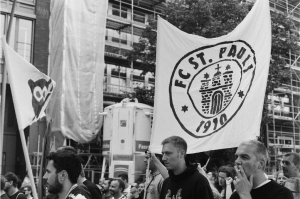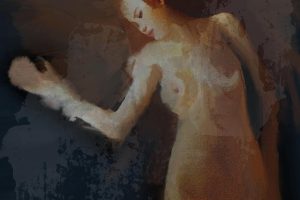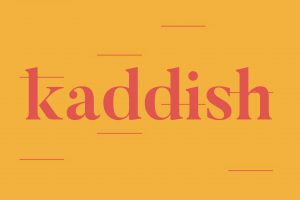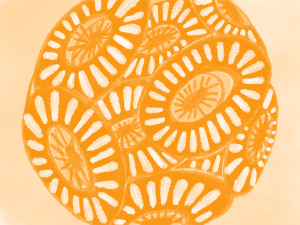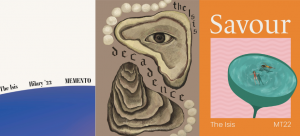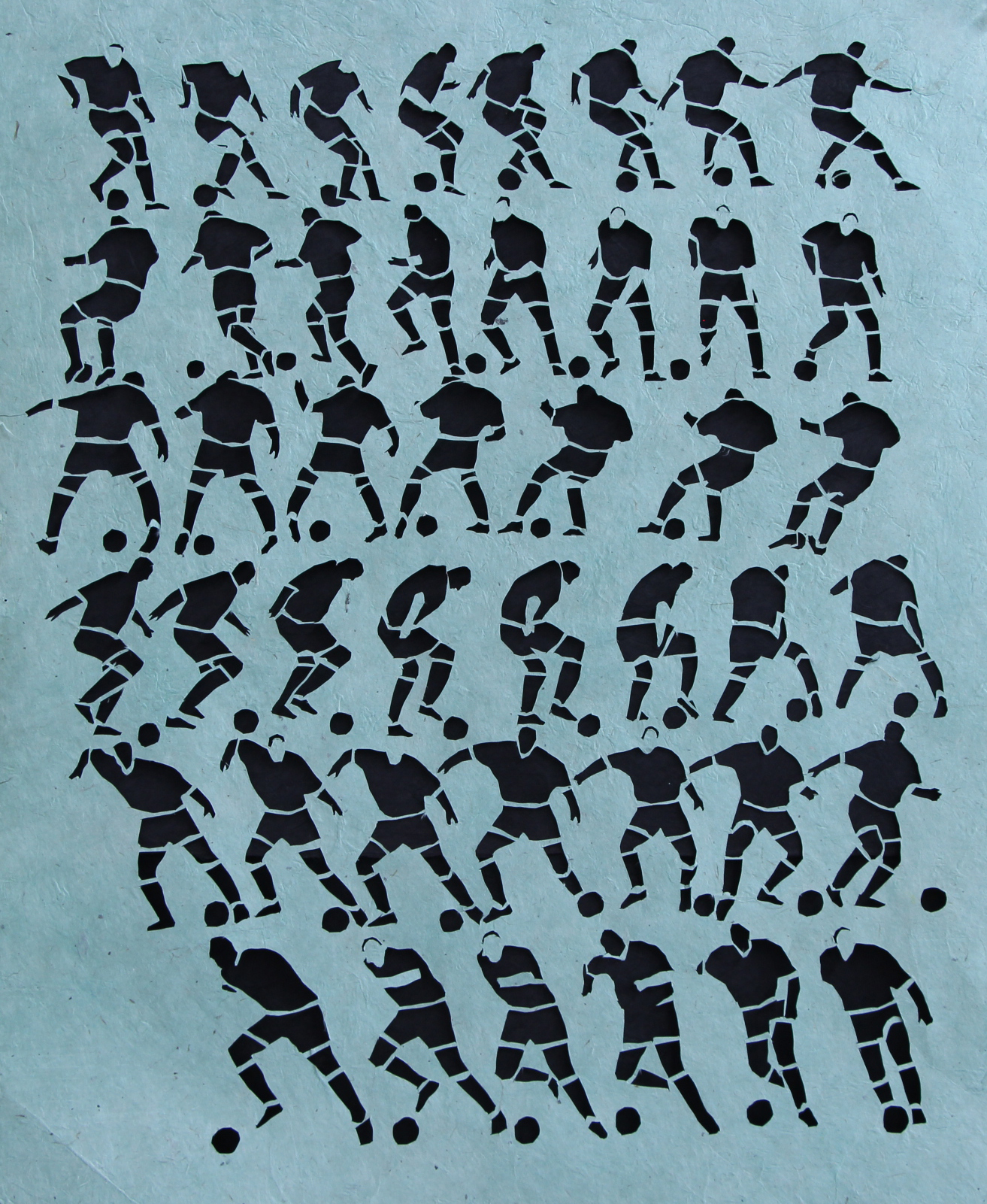
Off-Foot
by Emanuele Biasiol | June 11, 2016
It’s the eighty-seventh minute and Newcastle United are down 3-4 in front of their fans. A defensive clearance puts Coloccini out of reach, and spins the ball up in the air. It falls outside the box to the unlikely Cheick Tiotè, “who beans it low and curves it into the bottom corner,” almost making St. James’ Park collapse under the weight of the supporters’ roar.
On the other side of the ocean, Case Jernigan, art bachelor and aspiring creative, leaps off the barstool and spills his drink on the floor of a New York pub. His favorite goals are exactly Tiotè’s kind: ones that are scored with the player’s weak foot, or ‘off-foot’.
Though art and football are not usually the perfect match in the average supporter or art collector’s mind, they’ve always been for Jernigan. His studio has always been filled with little drawings and sketches of Zidanes, Maradonas and Cantonas scoring, handballing or fighting. In 2014, he began to wonder what it would be like to see those figurines play the great games of his past. To try it out, he decided to create a stop-motion animation of a multi-jointed Zinedine Zidane figurine walking to the penalty spot and placing the ball on the spot. Not having the right software, the attempt was painstakingly drawn out. “It was horrible stuff,” he tells me. “When I got home and popped the memory card in, I found a creature of my nightmares: a huddled, jerkily stumbling, baldheaded, shadowed figurine stumbling into the frame.”
Although frustrated by the minute details that make a stop-motion animator’s life so complicated, he persevered, locking himself in his studio for long, uninterrupted hours. Sustaining himself with good music and coffee, he planned and drew his animations while trying to push himself “into a zonal headspace where natural mark making and learned skills flow together with personal history.” The process of actually creating the moving image required even more attention. “While the paper works demand a keen sense of scale to produce a meaningful composition, for animation patience is the key, especially if I’m actively moving paper pieces around, shoot after reshoot.”
A lifelong football fan, I ran into Jernigan’s art when my team, the Old Lady Juventus, started their PR collaboration with Off-Foot, giving Jernigan the opportunity to recreate the ‘goal of the month’ as voted by the fans. His work struck me in the way that it crystalizes the sportive moment into something timeless, thanks to the vintage feel he often gives to his work. It also tends to bring, by not including detailed reproductions of sponsors, stadiums and crowds, the action into a form of institutional and commercial ‘isolation’—unusual in an age where the hyper-commodification of sports and sportsmen is rife. And this isolation, as well as Jernigan’s attention to detail in reproducing anatomic features and the movement of athletes, encourages an appreciation of the footballing skill being animated as a standalone act.
Just like in football, his reference point for his artistic inspiration was provided by the old greats. He studied “the shape and color of Piero della Francesca, the mark making of Philip Guston, the static beauty of classic hellenistic and Egyptian works,” while also referring to the visual delicacies of Kubrick when putting together his animated narratives. As he dug deeper into the field of animation, he began to perfect not only his technique but his materials: he started adopting “silky papers from Japan and South Korea, rough hewn pieces from Butan and India and textural sheets from Italy.”
Despite this dedication, his passion for football couldn’t be satiated by just putting ink to paper: he would occasionally emerge from the lofted studio space he arranged in his home to play pickup soccer on some Brooklyn pitches. That’s where he was reunited with his highschool friend and Manchester United fan Anderson Fariss, with whom he began the project Off-Foot. Jernigan produces all the football-based artwork while Fariss deals with the commercial side.
Since the establishment of their collaboration, Jernigan has been working day and night to transform the footballing pieces of his childhood into animations that convey the emotional weight they had for him. The ’90s feature heavily—from the violence of Cantona to the free kicks of Beckham, from Alexi Lalas to Umbro sportswear. But though he celebrates the heroes of the preinternet era, it’s the world of social media that has changed the future of his project. While producing artworks, Jernigan would constantly post them on his Instagram profile. One of his ink drawing animations, featuring Maradona and Messi, went viral and landed on the desk of one of the communications assistant at Barcelona FC.
The club went on to share the piece on their own Instagram, giving credit to Jernigan, whose profile instantly gained 15,000 followers. That propelled him to the sphere of social media, and since then his job enquiries and opportunities have come flooding in through Instagram and Twitter. He was approached by LA Galaxy, who wanted him to commission a short animation for Steven Gerrard’s arrival to the club. He’s also been working on longer animations: after single-handedly producing the short film A Brief History of Soccer, for the last few months he has been working on a project called ‘Soccer in Sun and Shadow’ with his friend John Giunta, who is designing the sound for the work. The piece will feature Garrincha, George Best and Maradona and will be ready for the summer.
To say the least, Jernigan is “pretty excited”. He had not expected that something he was doing for his own enjoyment would become such a well-received art form. Though he is not only producing commissioned pieces, these make up for the large part of his produce, and mean he can stay in the studio while getting paid—not something that often happens in New York. After teaching, working as a school administrator, a commissioned portrait painter, writer, tennis and football coach, it’s the first time a job has allowed him the time and space to flesh out creative ideas. “I get to think about soccer and get paid at the same time. What’s not to like? Plus, it’s a lot better than selling peanuts at a baseball stadium. Oh yeah, I did that too.”
Image credit Case Jernigan
